The Broughton’s are truly special. From the rugged wilderness, to the charming resorts, to the fishing/crabbing/shrimping, to encountering wildlife, we were excited to share this little slice of heaven with our good friends from Palm Desert CA who reside in Vancouver BC.
We started in Turnbull Cove, and were surprised that there were only three boats anchored in this popular spot the first night.
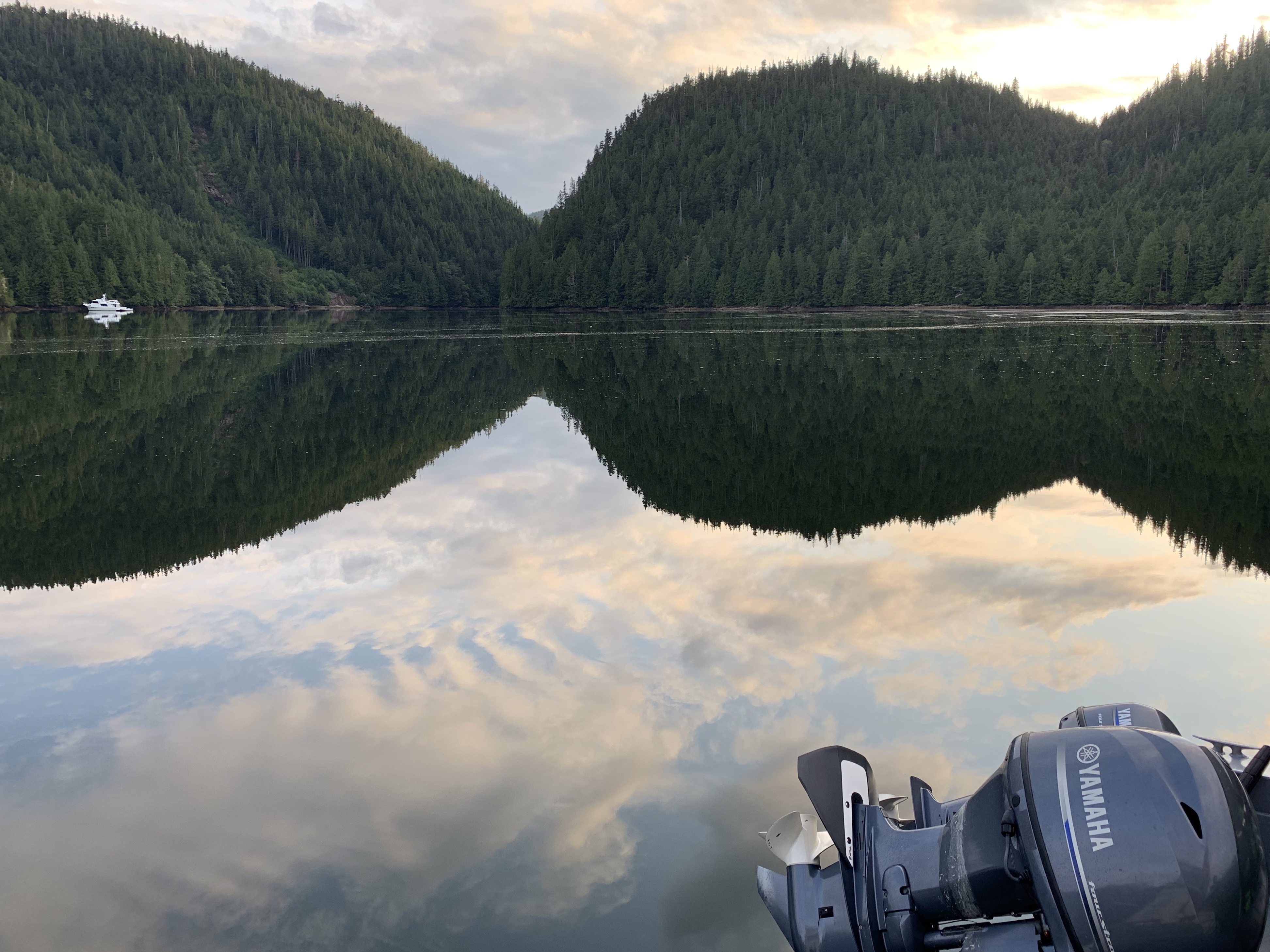
Glass conditions in Turnbull Cove.
We shot roaring hole rapids, on a flood and an ebb (having been through these rapids multiple times, we had local knowledge).
placeholder://
We crabbed and shrimped in our “spots”, and we had the spectacular experience of seeing a pod of nine orcas transit through Mackenzie Sound up to Nimmo Bay, and being the only boat floating along with them. It turns out they were sleeping for a portion of the time we were with them – three hovered at the surface in shallow (60ft) water. There was also an adorable little baby in tow.
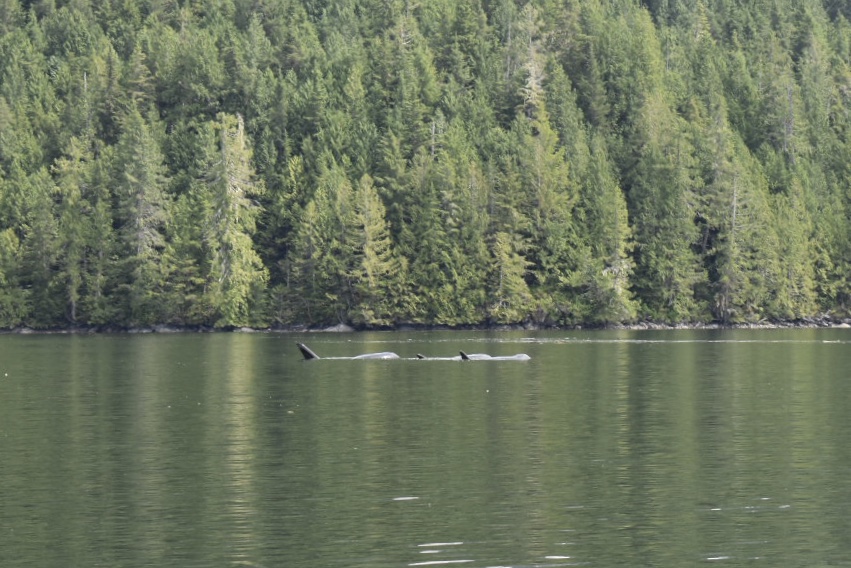
These whales are takin a snooze.
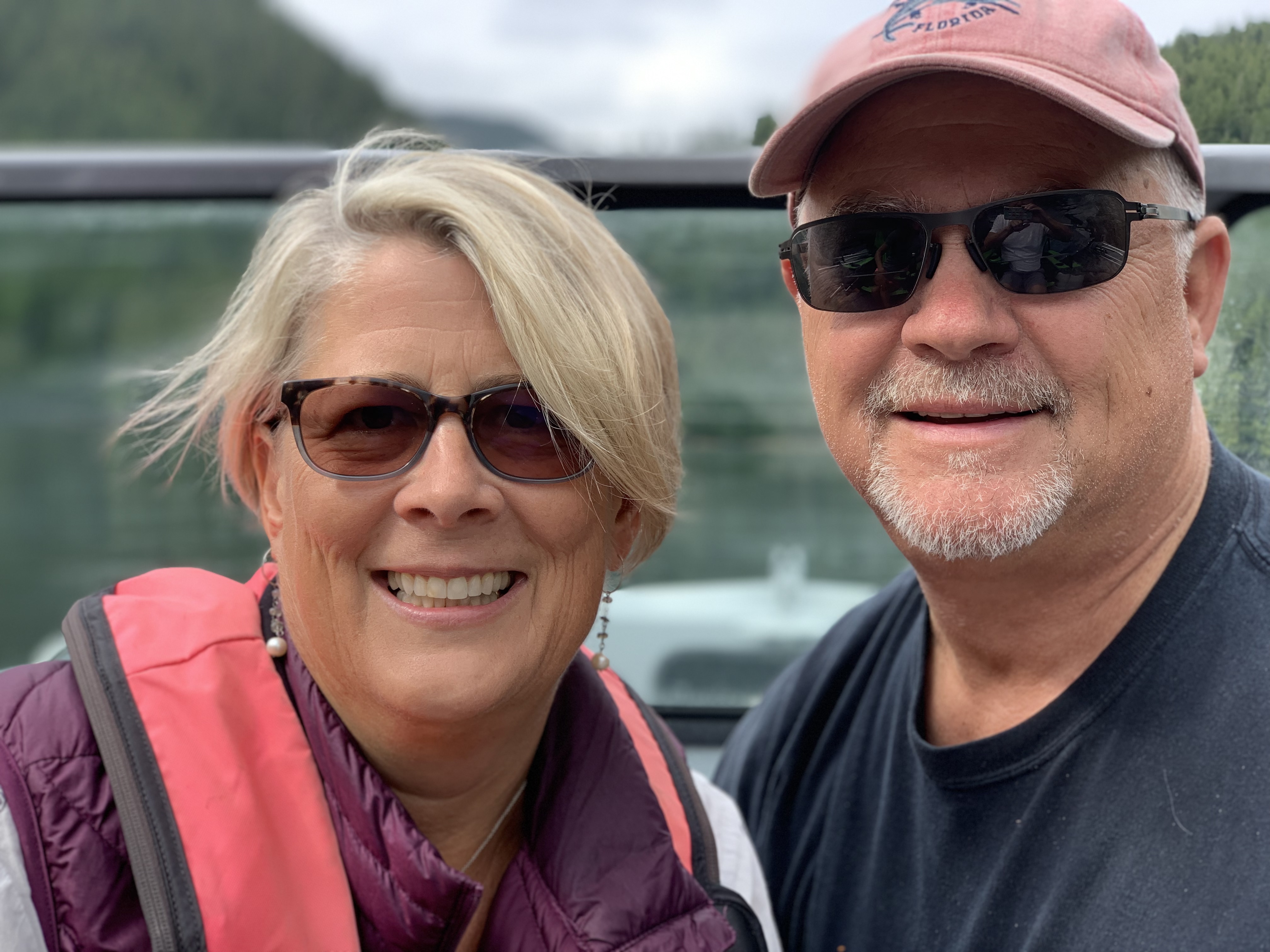
Tom and Venetia, Bill and Tessa, out gunkholing 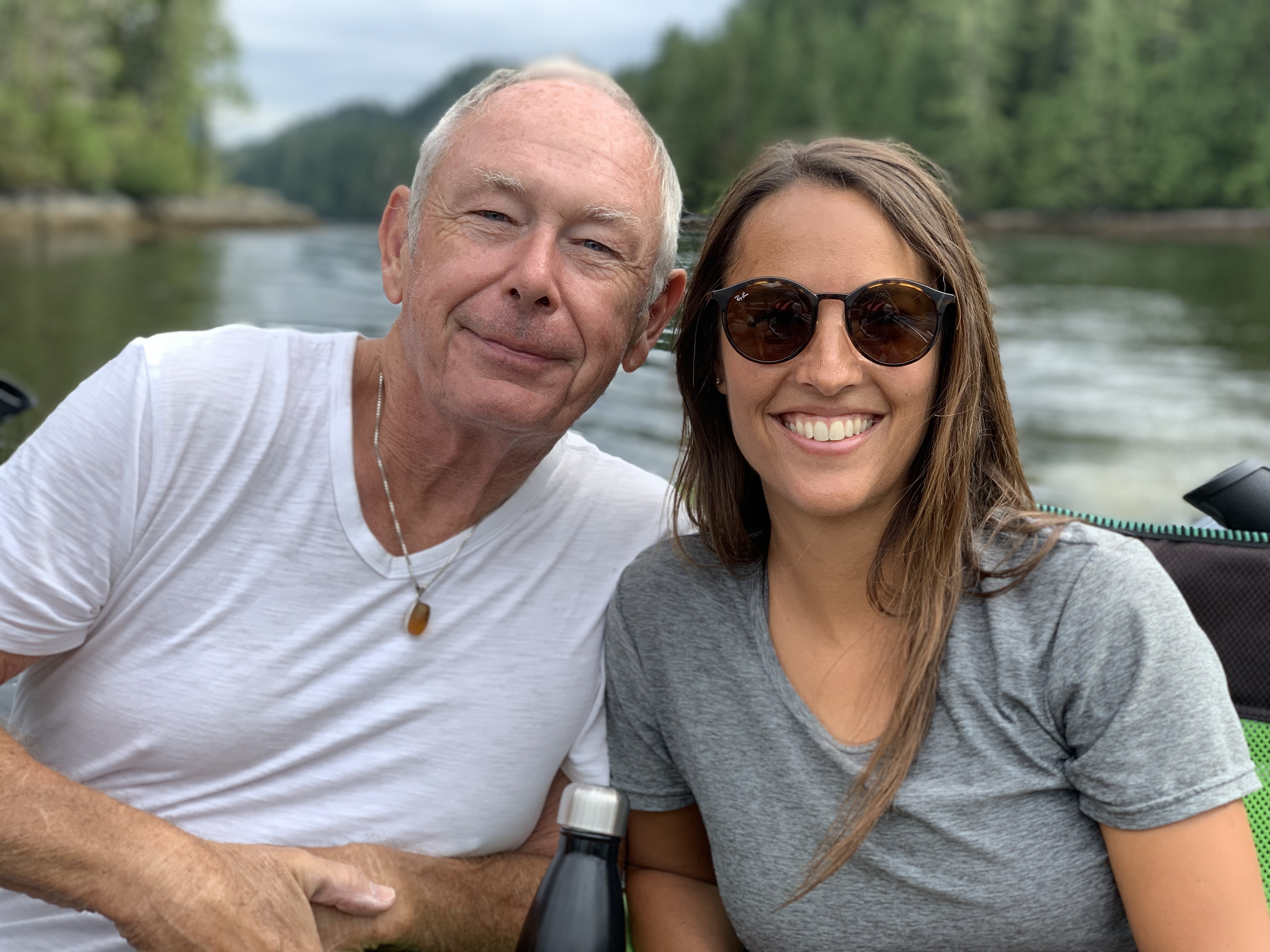
 And Portia, enjoying this calm anchorage in Turnbull.
And Portia, enjoying this calm anchorage in Turnbull.
Our intent was to stop at Nimmo Bay for massages and dinner, but they were booked for the month of August. We later learned from another boater that you need to plan your reservation one year in advance. In the past years, a months notice had been sufficient. Apparently we are not the only boaters who have discovered and enjoy Nimmo Bay … !
Sullivan Bay was next on the itinerary; Debbie, Laura and Cody were welcoming and remembered us from previous seasons. They still do orders for turnovers and sweet rolls, as well as happy hour but they ran out of golf balls. One of the highlights for us was taking a swing at a floating green (depending on the tide and current, closer or farther away) at the end of happy hour for a free night’s moorage. Since we had a scratch golfer amongst us, we thought we’d have a good chance. They also do dinner M/W/F, make a reservation in advance as they fill quickly, and new this season lunch daily.
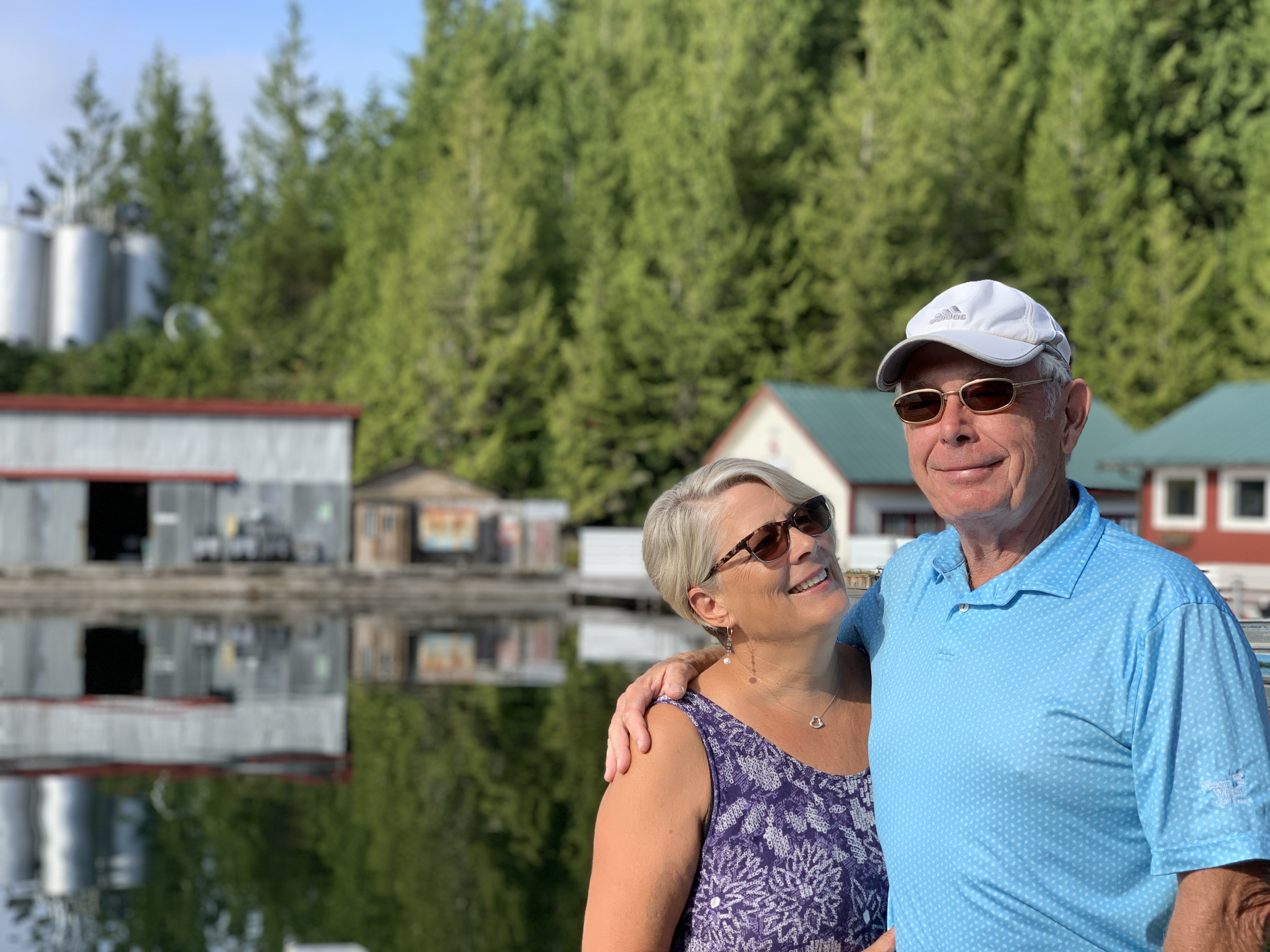
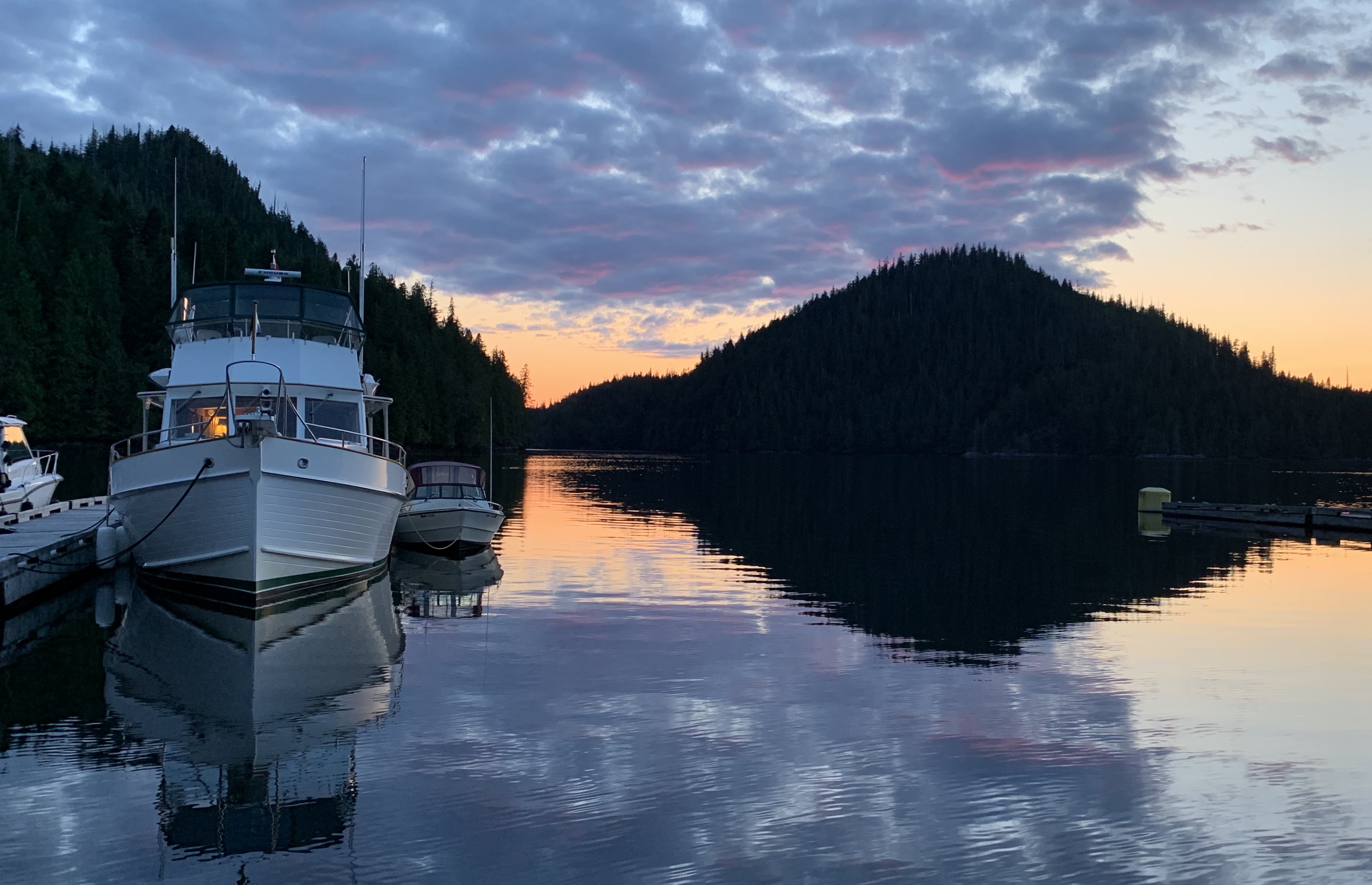
Golden Hour and Sunset at Sullivan Bay.
Of course to round out our cruise for our friends new to the Broughton’s we went to Pierre’s for the famous pig roast. More shrimping and crabbing, gunkholing and a walk to see the legend Billy Proctor, and the highlight of the cruise: spending a day with Survivalist Nikki Van Schyndel.
We have been cruising up in the Broughton’s for eight years, have been to two of her talks, have read her book, and kept somewhat up-to-date on her blog. She was most recently on the TV series Alone Season 6, surviving in the Arctic. We have talked with boaters over the years who have done an eco-tour with her, and said it was an amazing experience. What better fun than to do a tour with Nikki with our good friends?
Tessa inquired with Tove at Pierre’s Echo Bay if Nikki is still doing tours, and the answer was unfortunately no because the First Nation have shut her down. The gist being they do not like her having more knowledge about their area than them, and giving tours based on this local (First Nation) knowledge. This was truly disappointing, especially on the heels that Nimmo Bay was not accepting anymore boaters for the month of August. However Tove sent Nikki an email with Tessa’s contact info on the off chance she would like to spend a day with us.
And as it turned out, Nikki contacted Tessa, and the one day she was available was the first day we were at Pierre’s Echo Bay (she lives around the corner). Tessa emphatically responded to her, and we were truly happy and honored that she reached out. We downplayed spending a day with Nikki to our guests, but made sure they had read some of her book, read her blog post about her TEDx talk or watched her TEDx talk, and also had read some of Billy Proctor’s book about the history of the area.
And what a blast we had. We foraged our own ingredients for lunch at non-First Nation owned land. Nikki describing the plants and seafood as we foraged, along with other plants that we did not forage that can be used for medicinal purposes, nature’s toilet paper, or nature’s facial. She also gave us some background on the local Echo Bay bears, pointed out the beach where Captain Vancouver first stepped ashore in the Broughton’s and was greeted by the First Nation, as well as other former First Nation village settlements (all but one there is nothing left for the naked eye to see), and some of her favorite spots to explore in the Broughton’s.



 placeholder://
placeholder://

Nikki was the one that squealed with excitement and exclaimed that the orcas we saw were sleeping, after we described their movement (or lack thereof). And also was super excited to hear from us about a former Neighbor of hers in Echo Bay’s new residence: at Jennis Bay.
We happened to chat with him on our day trip up Drury Inlet, we popped into Jennis Bay to see how things were going. He told us to watch out for a momma grizzly with three teenage cubs. They had been roaming around the property a couple days ago, and he pulled his gun out for defense and it only had four bullets. The rule of thumb is you always have one bullet for yourself, but with four bears he was short a bullet. So he decided if he missed a bear, only being able to kill three of four, and if the one disgruntled bear left alive happened to catch him and start gnawing on a limb, he’d use his pocket knife to go through his own temple and twist.
As Nikki was picking some spruce tips to boil in water for tea, she had a fond story or two to tell us about her former neighbor. And maybe she’d have to make a trip over to Jennis Bay to see him on her day off. This gave Tom a chuckle, and he said, wait, what do you mean your day off? Which caused her to erupt in laughter, because, it’s not like she has a set work week and “days off”.
As we cruised around the Broughton’s with Nikki looking for a coarse sandy beach (you could probably count them on two hands) to cook lunch on, she told us some history about the Broughton’s and the current political situation. After three tries for a vacant sandy beach (she couldn’t believe there were people on all of the beaches), we shared our beach not with other humans, but a black bear. We heard him a couple times, Nikki saw him, but he never came over to cause us ill will.
As Bill picked soon-to-be “crab croutons” from the water, and Tessa and Tom stripped cedar bark for fire starter, Venetia with Nikki’s help made fire. Bill then kept the fire stoked as Nikki prepared a fabulous lunch from the greens we foraged, with the addition of coconut oil, brown rice, dried berries and kelp.
It was pretty spectacular and special to spend the day on an uninhabited island with a view out to Blackfish Sound, eating a meal mainly from ingredients we foraged, and talking with Nikki about her experiences. This is something we’ll talk about for many moons in the future. Thank you, Nikki, for choosing us to spend a day with!
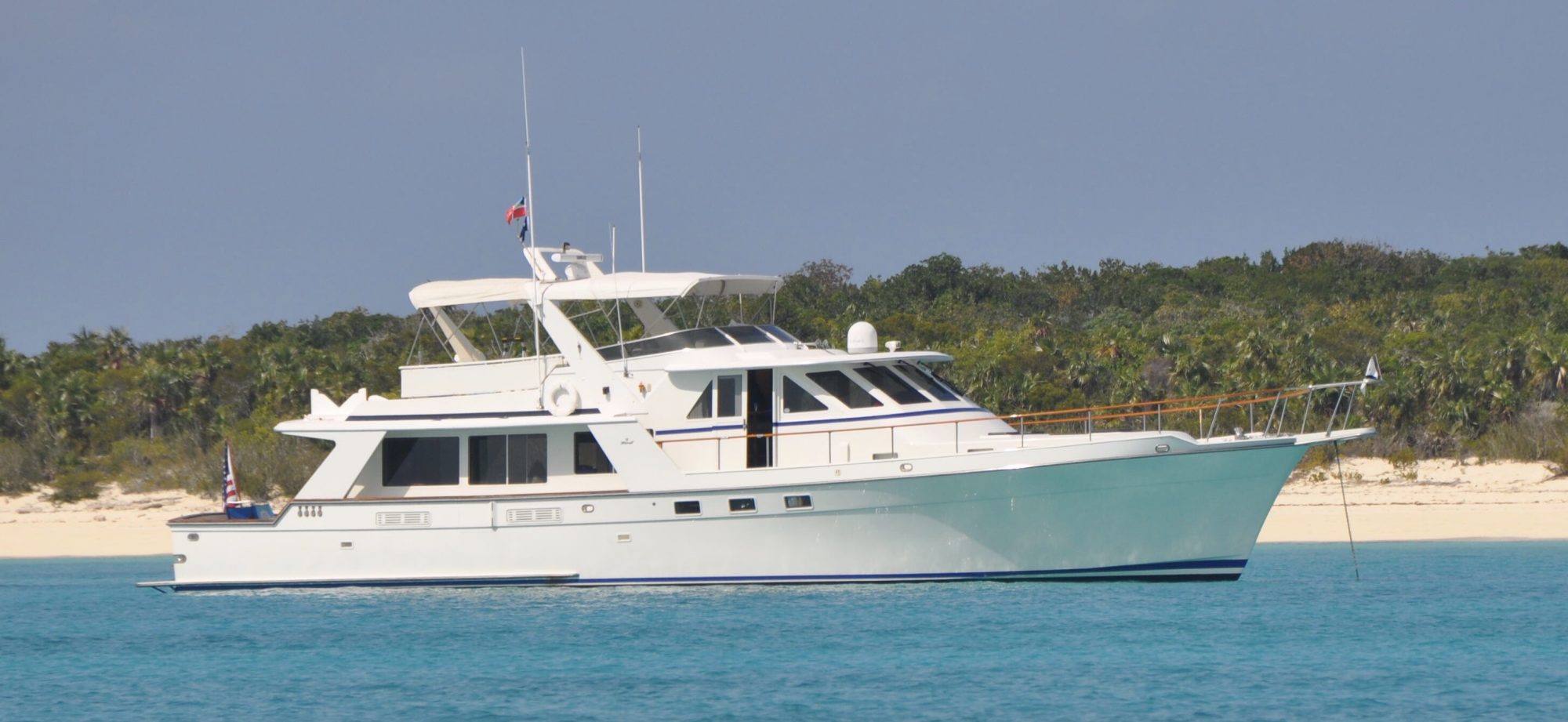




 And Portia, enjoying this calm anchorage in Turnbull.
And Portia, enjoying this calm anchorage in Turnbull.







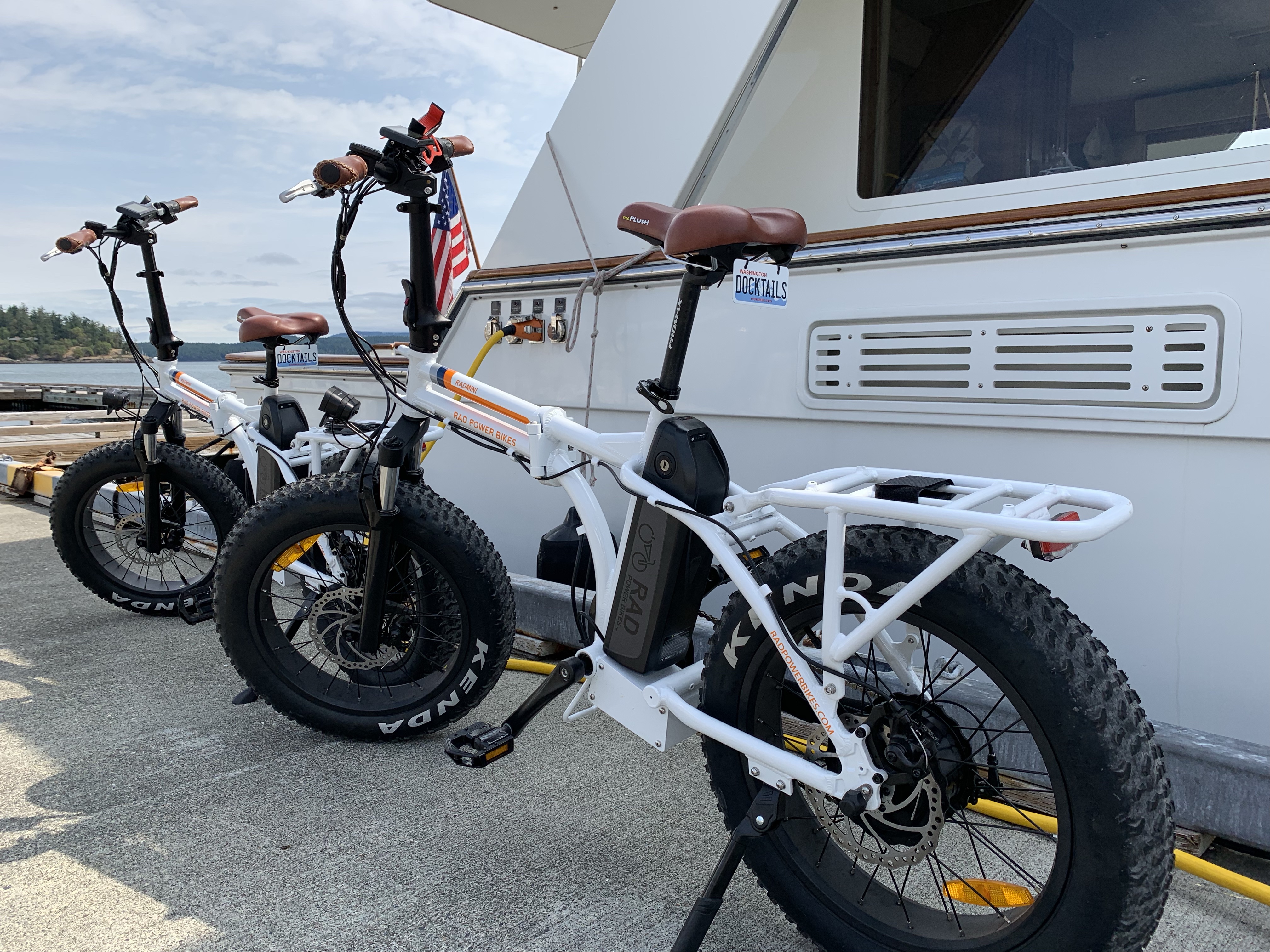

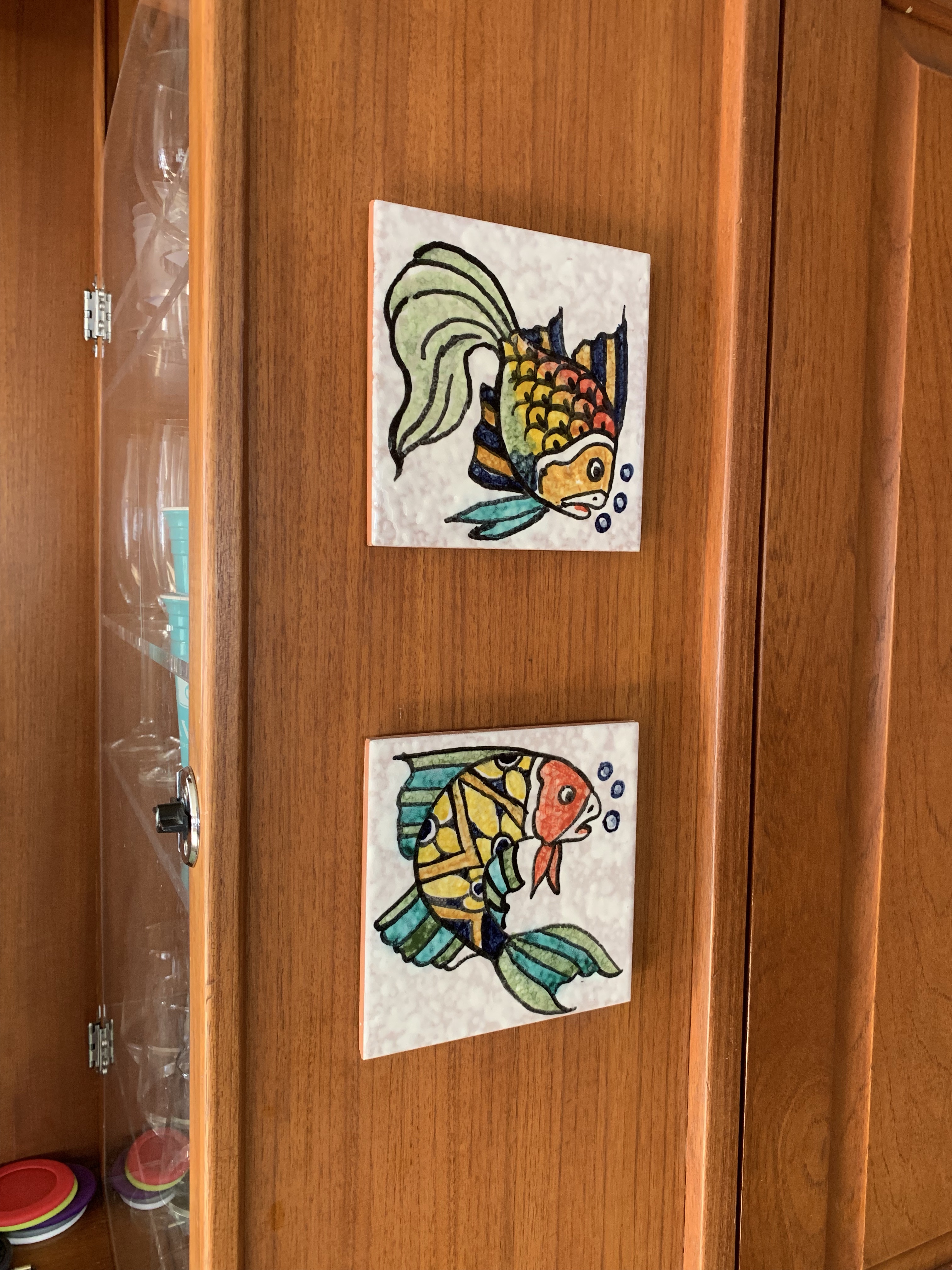
 The paintings in the kids’ room replaced with canvas prints of our time in the Bahamas.
The paintings in the kids’ room replaced with canvas prints of our time in the Bahamas.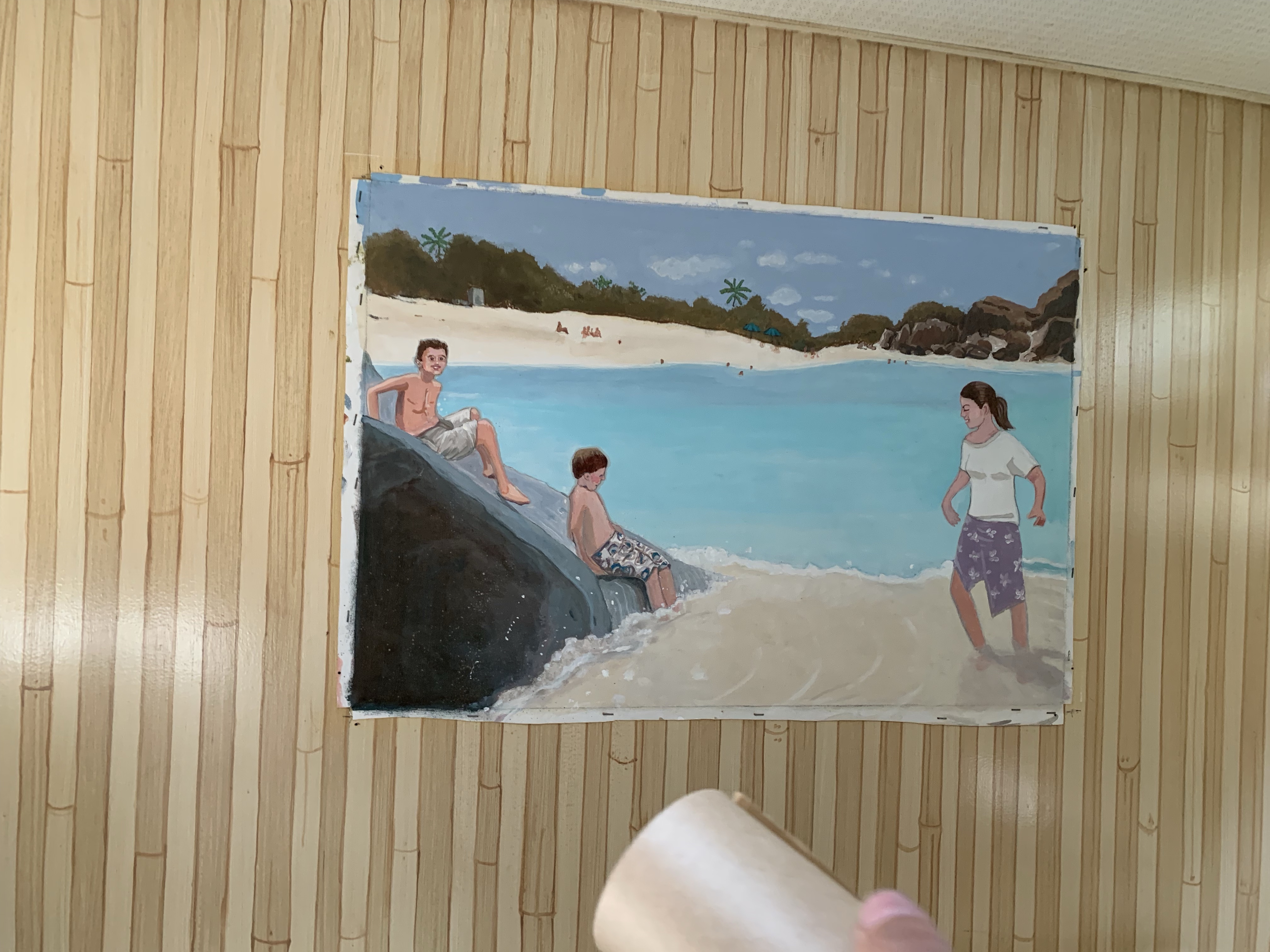
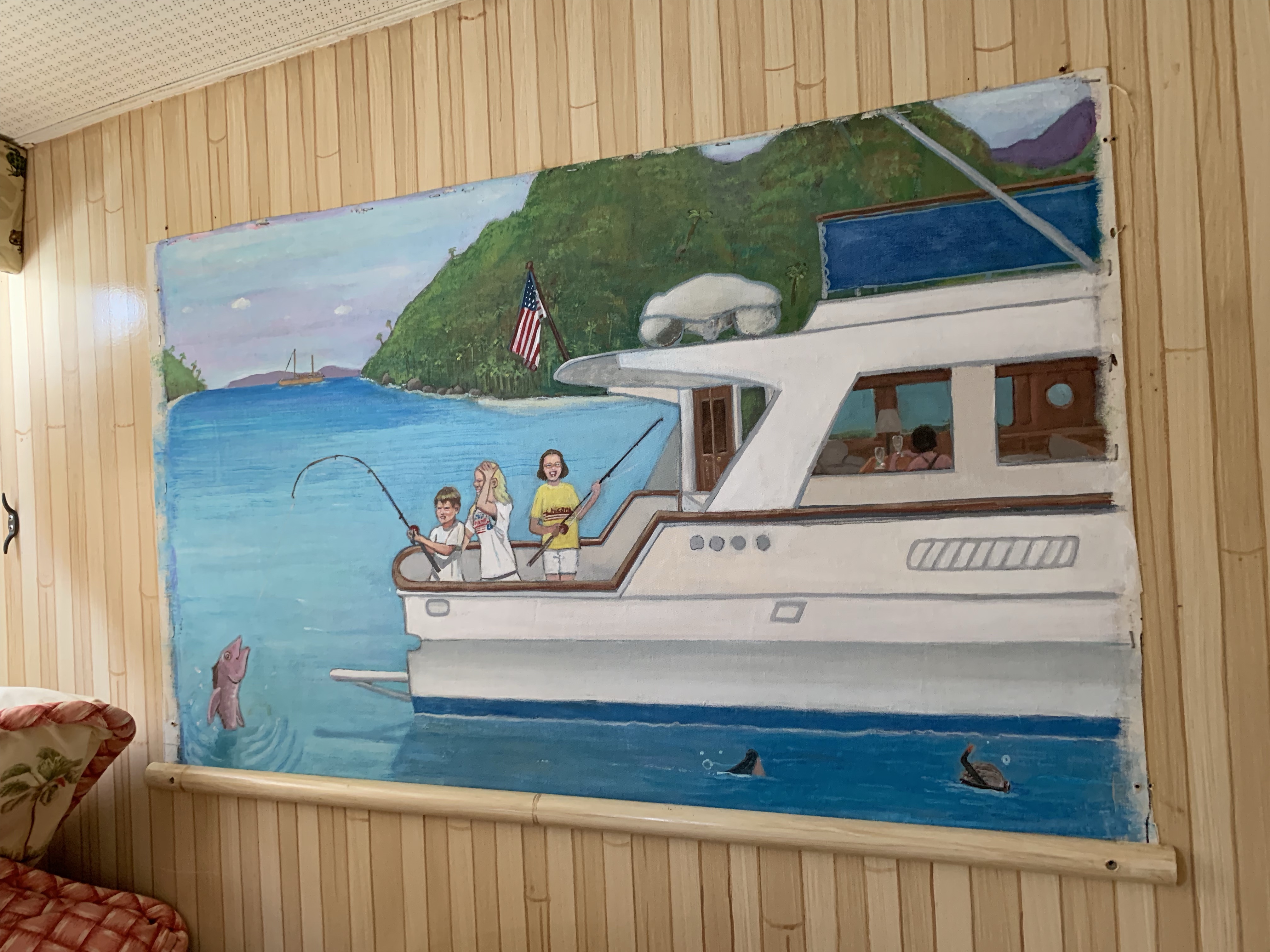

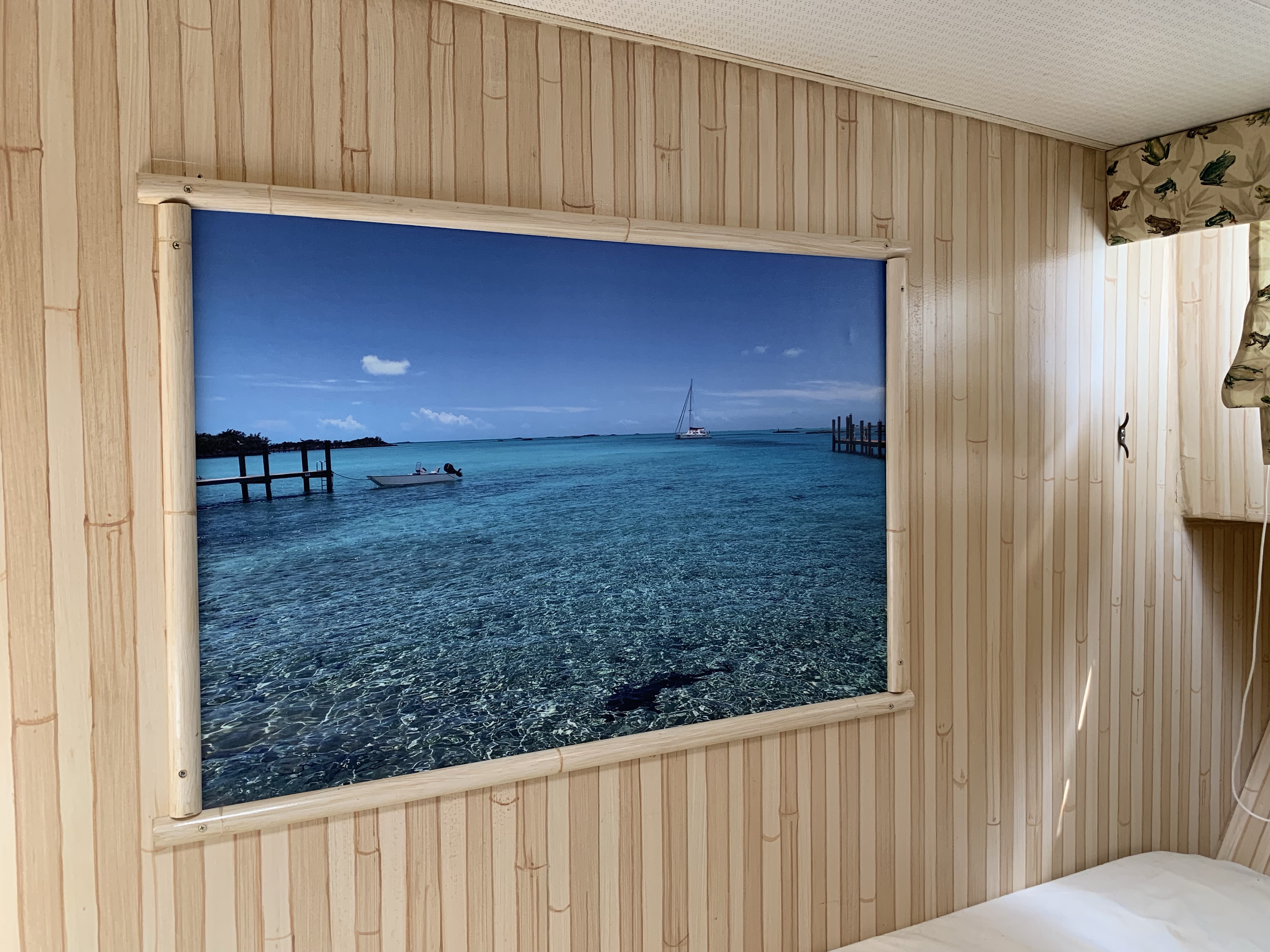 New lights with a usb plug in the kids’ room.
New lights with a usb plug in the kids’ room.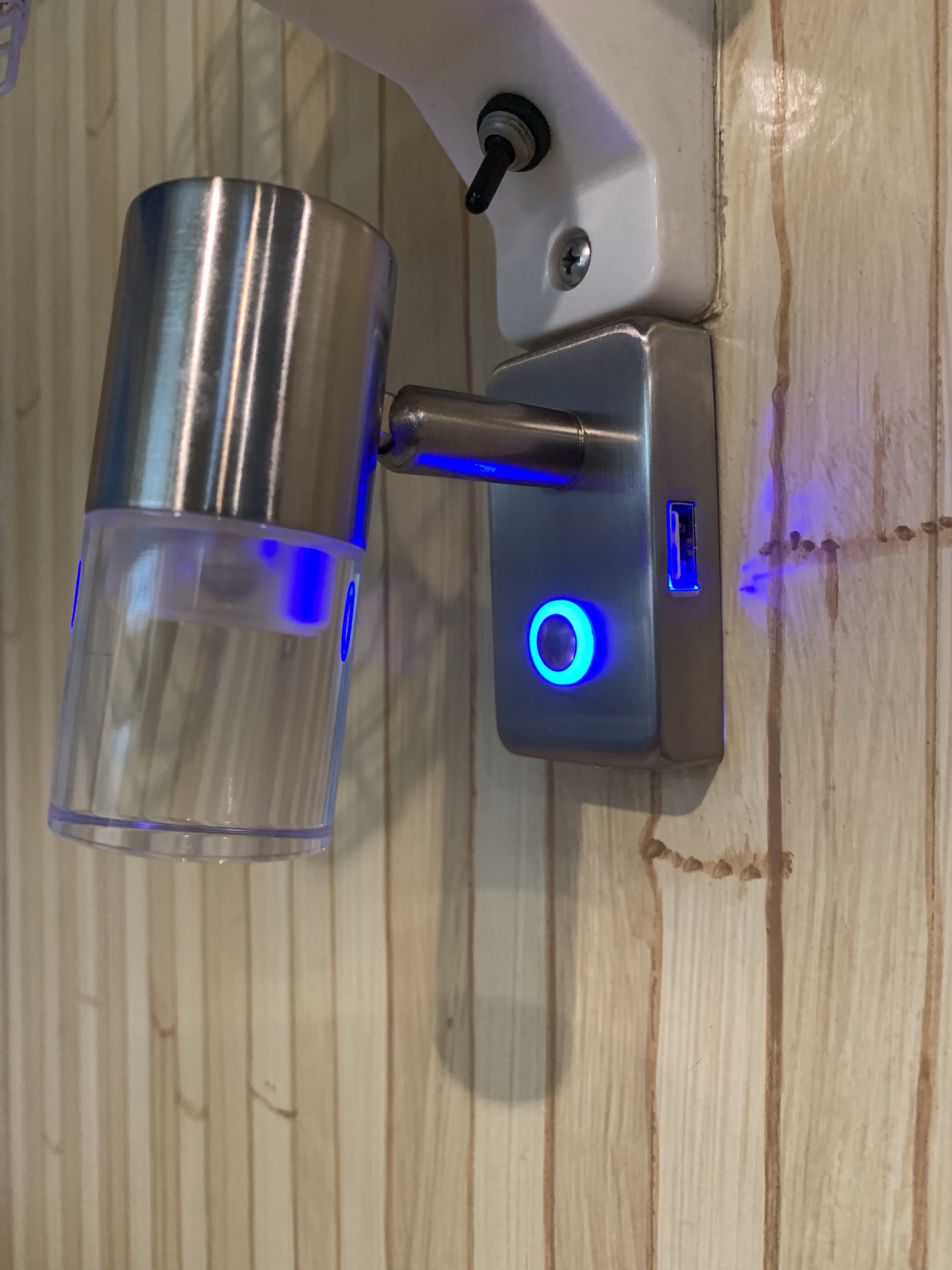
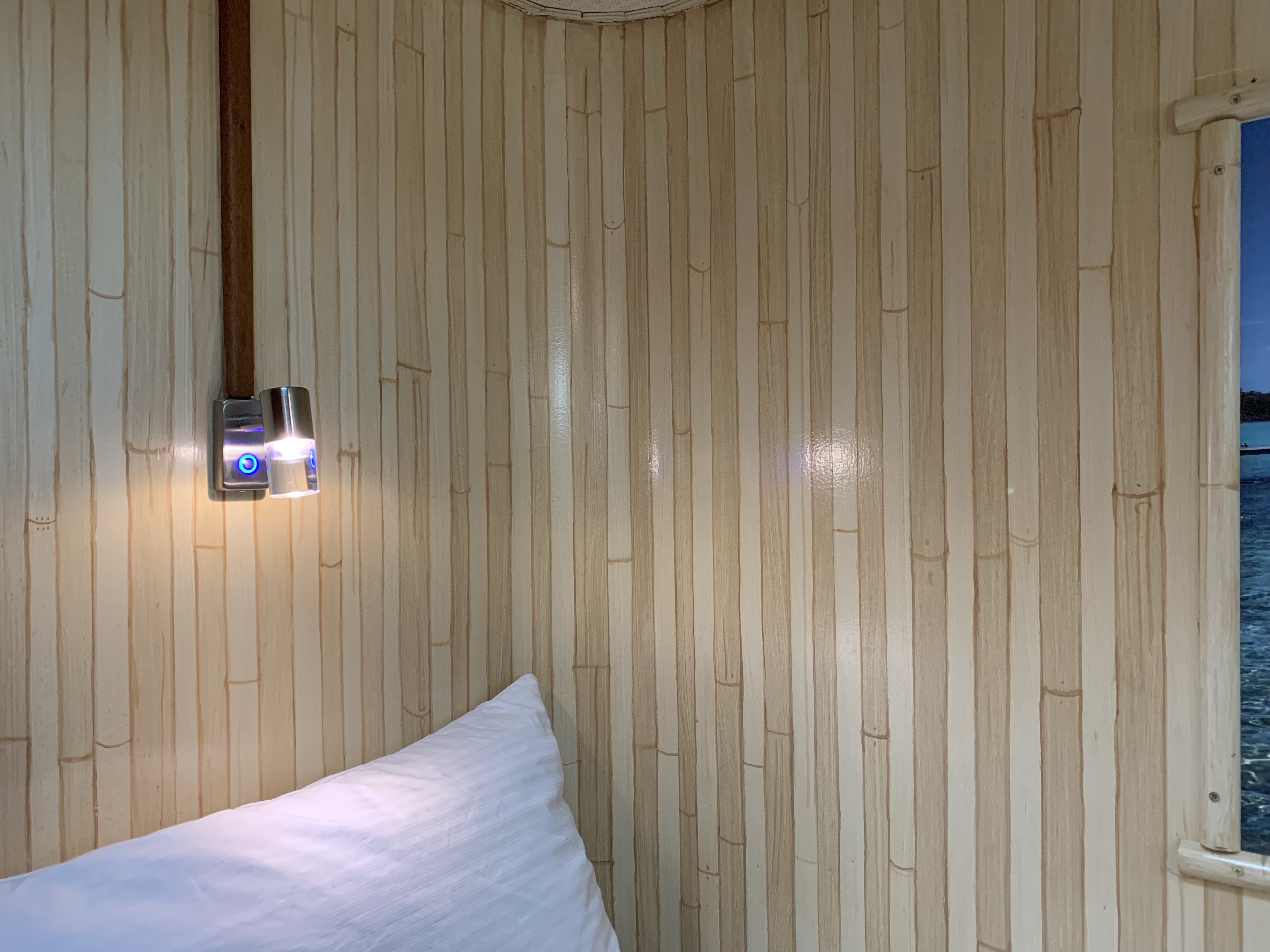 Custom fender covers.
Custom fender covers. After spending a day cleaning up the engine room, the old mats were tossed for these new cushy ones we found for $12 at Costco. Our feet and knees are happy campers!
After spending a day cleaning up the engine room, the old mats were tossed for these new cushy ones we found for $12 at Costco. Our feet and knees are happy campers!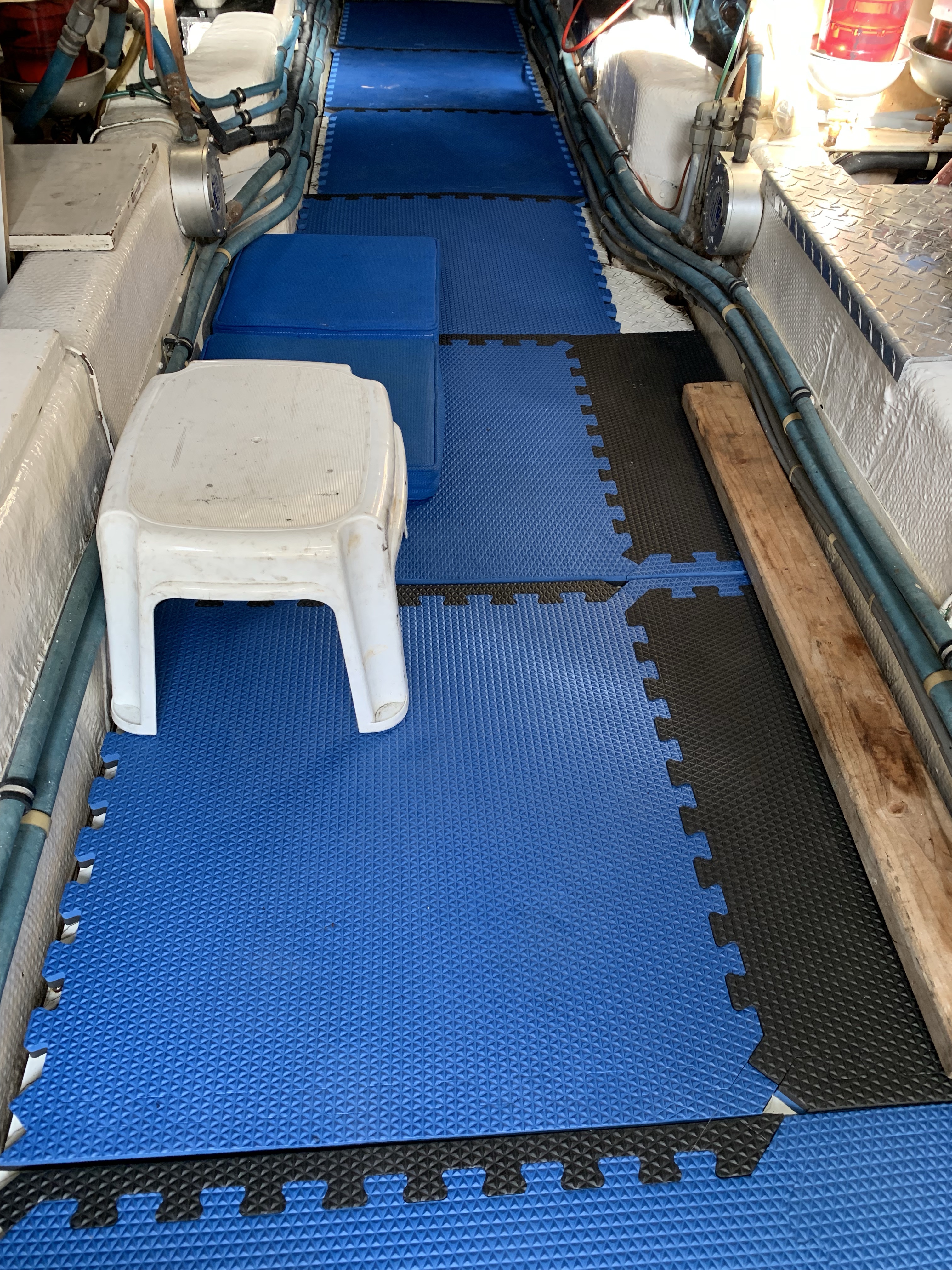
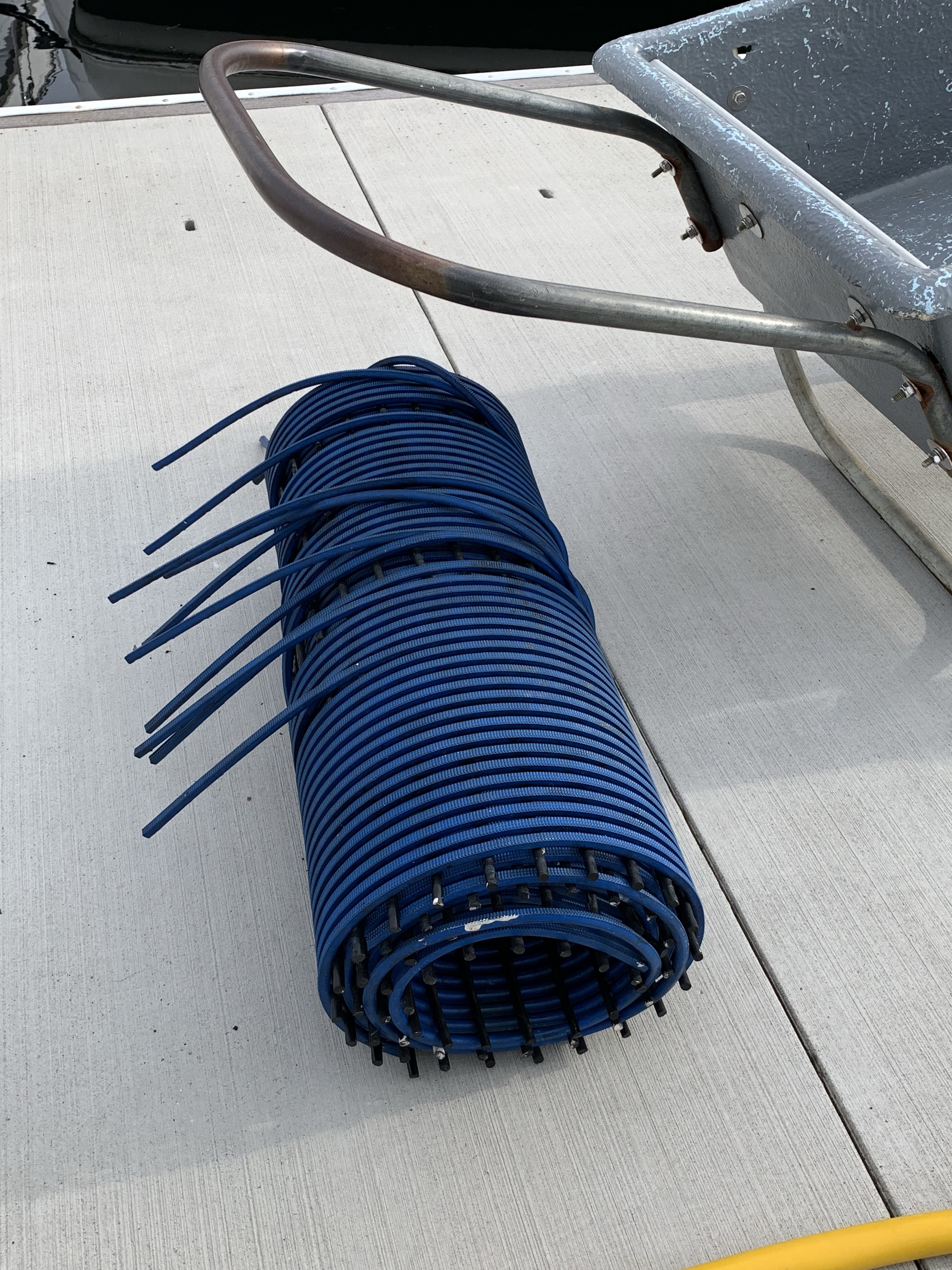 Going up to Roche for the Tollycraft rendezvous we had a westerly gale, and coming back we had a westerly SCA in the Strait of Juan de Fuca. Everything on the boat except the spice cabinet is set up for rough seas. We talked about, and really should have, taken a before photo. You couldn’t have laid all the bottles just how they fell. But needless to say, we’ve hit a freighter wave since that we weren’t prepared for and rocked the boat imitating rough seas, and all the spices stayed in place.
Going up to Roche for the Tollycraft rendezvous we had a westerly gale, and coming back we had a westerly SCA in the Strait of Juan de Fuca. Everything on the boat except the spice cabinet is set up for rough seas. We talked about, and really should have, taken a before photo. You couldn’t have laid all the bottles just how they fell. But needless to say, we’ve hit a freighter wave since that we weren’t prepared for and rocked the boat imitating rough seas, and all the spices stayed in place.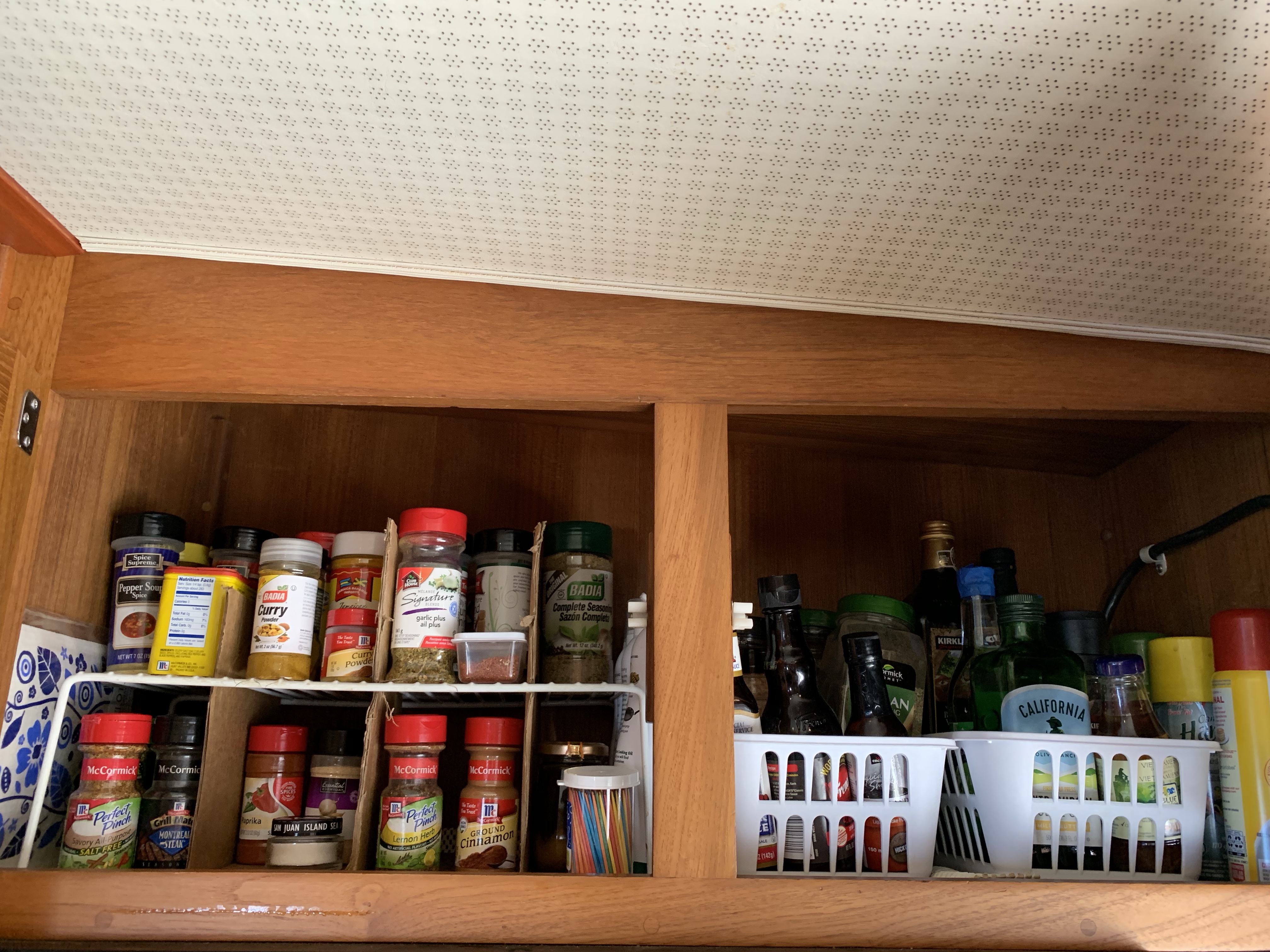 There’s always something you forget to bring aboard. This time was the downrigger balls. But the beauty of keeping our boat ten minutes from our house made it easy for those last minute gotchas.
There’s always something you forget to bring aboard. This time was the downrigger balls. But the beauty of keeping our boat ten minutes from our house made it easy for those last minute gotchas.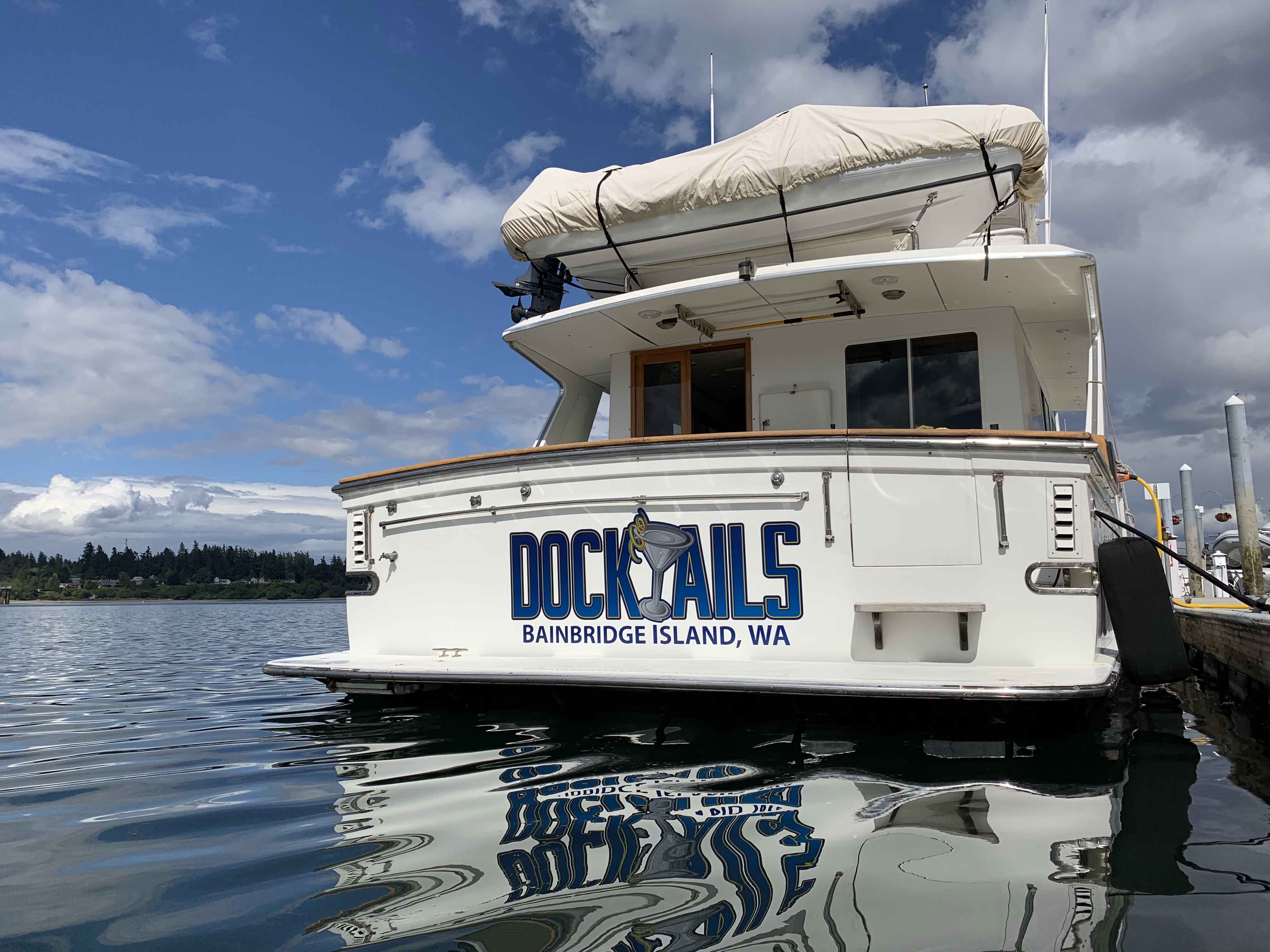 We were untying with some round-to-its still not finished. The main one being a new Wave WiFi, as we discovered the one onboard was ten plus years old and was of no use. This is particularly handy because it picks up the local WiFi and broadcasts it for all of your electronic devices on the boat. With the Simrad WiFi hub Tom installed, it is able to broadcast to our lower NSS9s as well as our Evo3s for updates.
We were untying with some round-to-its still not finished. The main one being a new Wave WiFi, as we discovered the one onboard was ten plus years old and was of no use. This is particularly handy because it picks up the local WiFi and broadcasts it for all of your electronic devices on the boat. With the Simrad WiFi hub Tom installed, it is able to broadcast to our lower NSS9s as well as our Evo3s for updates.